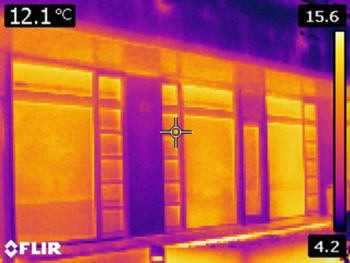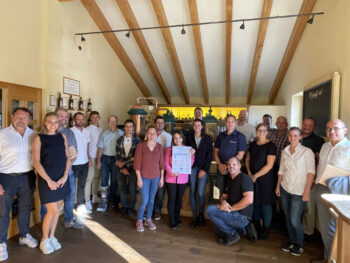Successful Project Completion: The Use of Grass Fiber in Paper Industry – Calculating the Carbon Footprint of an Alternative to Virgin Fibers
The FfE, working in cooperation with Creapaper GmbH is pleased to announce the completion of the project “The Use of Grass Fiber in Paper Industry – Calculating the Carbon Footprint of an Alternative to Virgin Fibers“. This project has analyzed the production of Creapaper’s GRASPAP grass fibers, which can be used to replace a portion of the conventional pulp in the production of paper, and the use of GRASPAP in the production of paper with regard to energy savings and CO2-abatement.
The energy consumption of GRASPAP production and the resulting energy-related emissions were compared to those of conventional pulps (chemical, mechanical, and recycled pulp). These values were then combined with data comparing the production of paper using only conventional pulps to the production of paper in which GRASPAP replaced 30 % of the conventional pulp. This enabled a gate-to-gate analysis comparing the production of grass paper to conventional products.
The energy-related emissions of GRASPAP production were calculated using the energy consumption data collected by Creapaper during the production process. Energy consumption data of paper production was collected by one of Creapaper’s partners during the production processes of a product using GRASPAP and an equivalent reference product using only conventional materials. In previous projects [1] and [2] energy consumption data for conventional pulping processes was collected.
The energy consumption data of each process was then coupled with emission factors in order to calculate the specific emissions of the process. All calculations to obtain emissions of process steps or processes were performed using the 2019 emission factors of the “Umweltbundesamt” (UBA) for the German electricity mix (401 gCO2/kWh) and for natural gas (201 gCO2/kWh) [3]. This project focuses on energy-related emissions related to the production process and allocated to Scopes 1 or 2 of the GHG Protocol [4]. Process-related emissions in Scope 1 and emissions in Scope 3, emissions from processes such as transportation or disposal, were not included in the present project.
Results indicate that the production of GRASPAP consumes significantly less energy per ton of production than conventional pulps, consuming 25 % of the energy required for recycled pulp production and less than 3 % of the energy needed for chemical pulp production. This leads to lower energy-related emissions per ton compared to conventional pulps. These specific emissions of the production of recycled pulp, mechanical pulp, and chemical pulp are respectively 3.2, 18.5, and 19.6 times higher than the specific emissions of GRASPAP production.

The specific energy consumption of the paper machine during grass paper production was 12 % lower than during the production of the reference product. These energetic changes were then combined with the calculated CO2 footprints of GRASPAP and each of the conventional pulps to obtain specific gate‑to‑gate emissions of a paper product consisting of 100 % conventional pulp and a product featuring a substitution of 30 % GRASPAP. It should be noted that these products were not produced, and the potential usability of a final product resulting from these combinations of materials was not examined in this project. Due largely to the lower emissions of GRASPAP production, the calculated gate-to-gate emissions of the grass paper variants were between 16 % and 23 % lower than an equivalent product produced using only conventional pulp.
Sources:
[1] Guminski, Andrej et al.: CO2-Verminderung im Papiergewerbe. München: Forschungsgesellschaft für Energiewirtschaft mbH, 2019.
[2] Guminski, Andrej et al.: CO2-Verminderung in der Holzstoffherstellung. München: Forschungsgesellschaft für Energiewirtschaft mbH, 2019.
[3] Icha, Petra et al.: Entwicklung der spezifischen Kohlendioxid-Emissionen des deutschen Strommix in den Jahren 1990-2019. In: Climate Change 13/2020. Dessau-Roßlau: Umweltbundesamt, 2020.
[4] Sotos, Mary: GHG Protocol Scope 2 Guidance – An amendment to the GHG Protocol. Washington D.C., USA: World Resources Institute (WRI), 2015.


